
ULTRASUEDE SHOWROOM
Japanese materials group Toray commissioned designers Ryosuke Fukusada and Rui Pereira to create their first Europe-based showroom, located in Sintra, near Lisbon, Portugal. The brief called for an immersive environment for Ultrasuede, Toray’s premium suede-alternative material.
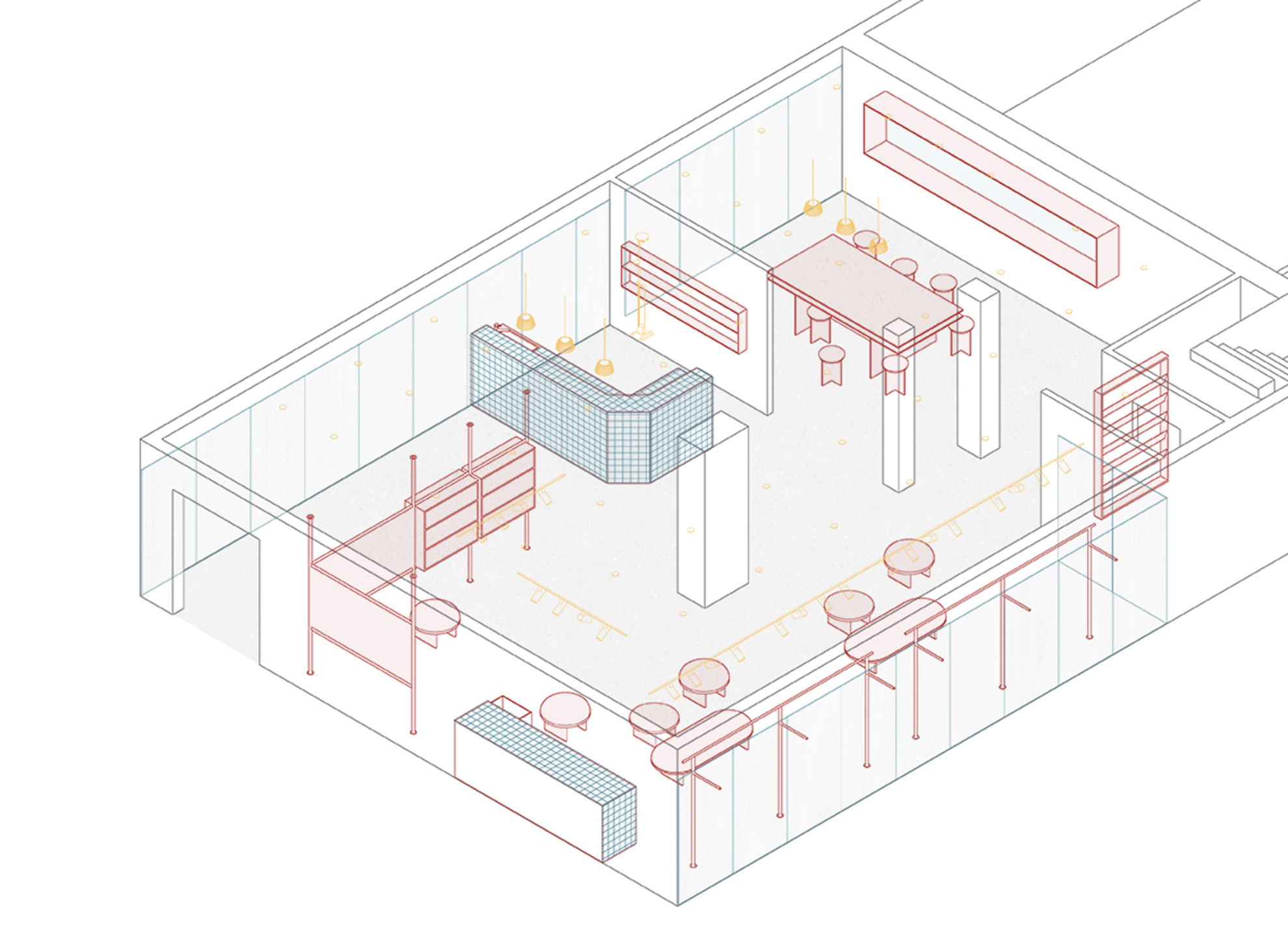
The primary challenge was to establish a calm, refined brand experience within an active sewing factory with no outward-facing windows. The designers identified an opportunity to develop an interior that contrasts with the industrial surroundings—an environment that encourages creative exploration and direct engagement with the materials on display.
The spatial concept draws heavily from the context. The team envisioned a transitional threshold between factory and showroom, referencing French mid-century structural aesthetics and the warmth of stained birch plywood cladding. This combination creates a controlled, serene atmosphere that anchors the brand narrative.
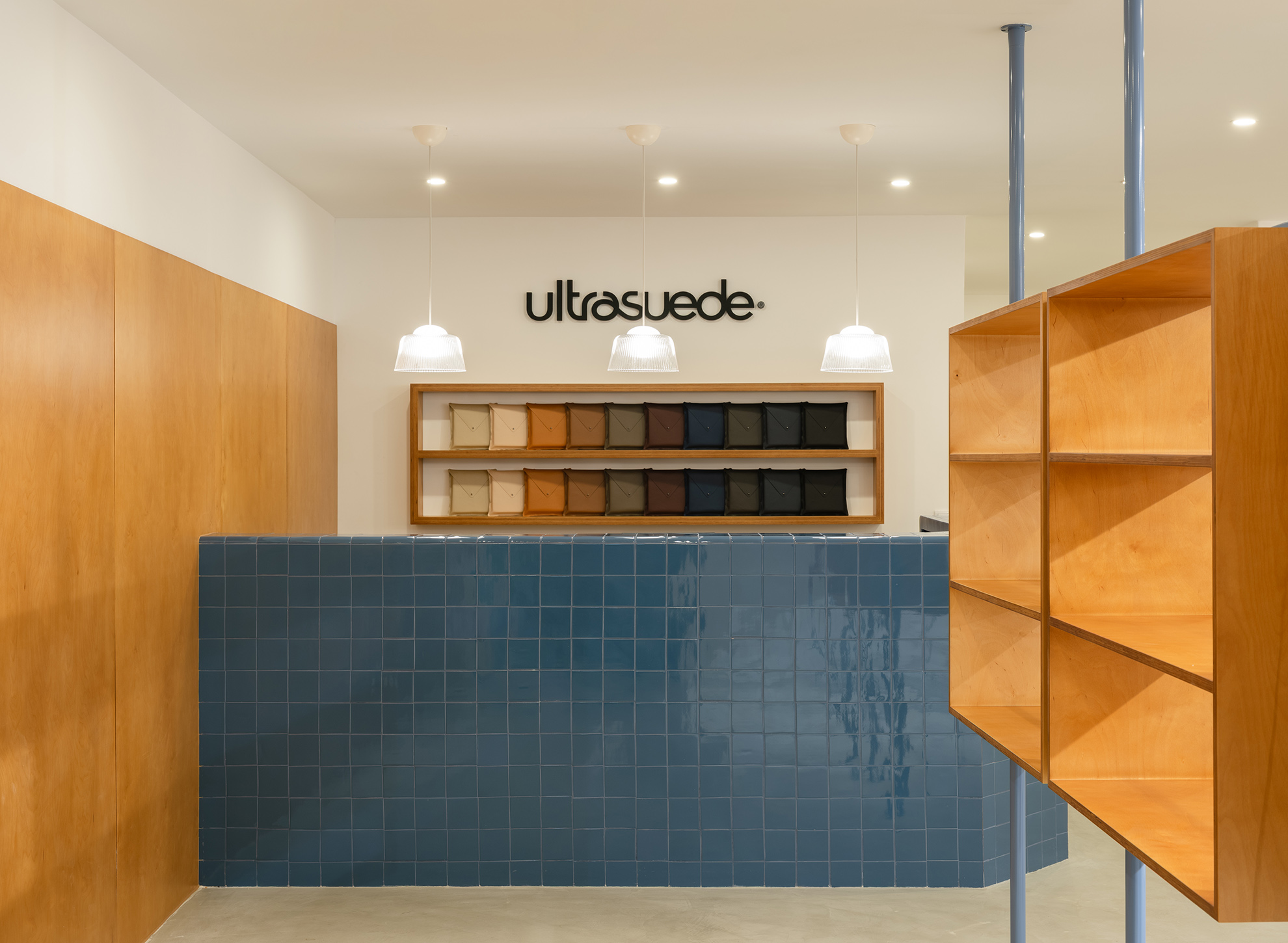
A key feature celebrating the showroom’s Sintra location is the integration of ceramic tiles by Viúva Lamego, one of Portugal’s oldest manufacturers of handmade ceramics. The reception counter, sampling console, and bathroom surfaces are finished in 10 × 10 cm high-gloss blue glazed terracotta tiles, providing a chromatic and textural counterpoint to the micro-cement flooring, birch-clad walls, and exposed steel elements.
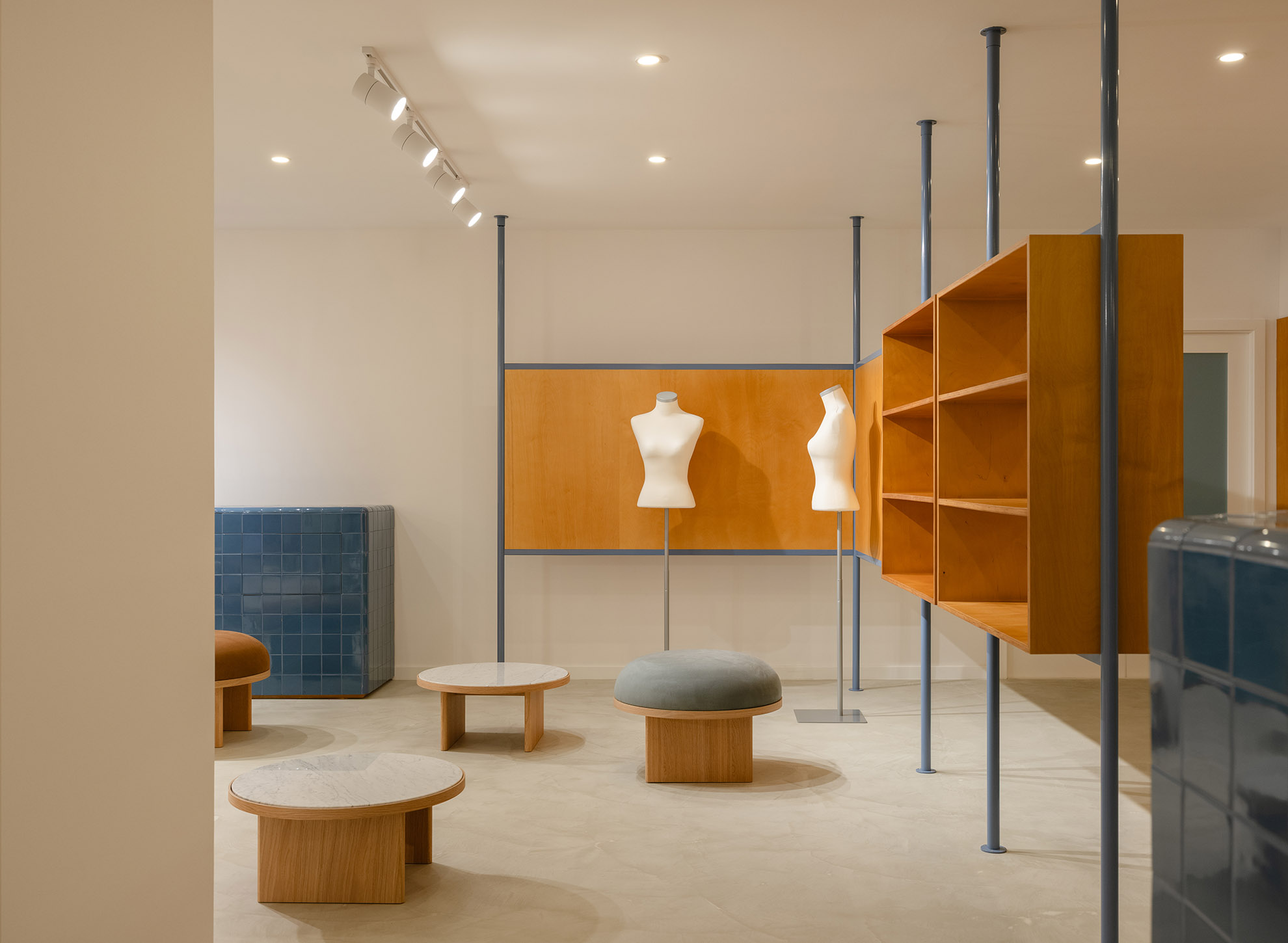
To display the extensive range of Ultrasuede colours and fabrication possibilities, two custom wall-mounted display racks serve as the central focal points of the room. Adjacent to these racks, a lounge area furnished with Anza stools, benches, and coffee tables enables tactile interaction with the materials. The tiled console incorporates four large drawers for storing samples, prototypes, and mock-ups. Two mannequins further illustrate the textile’s potential for apparel applications.
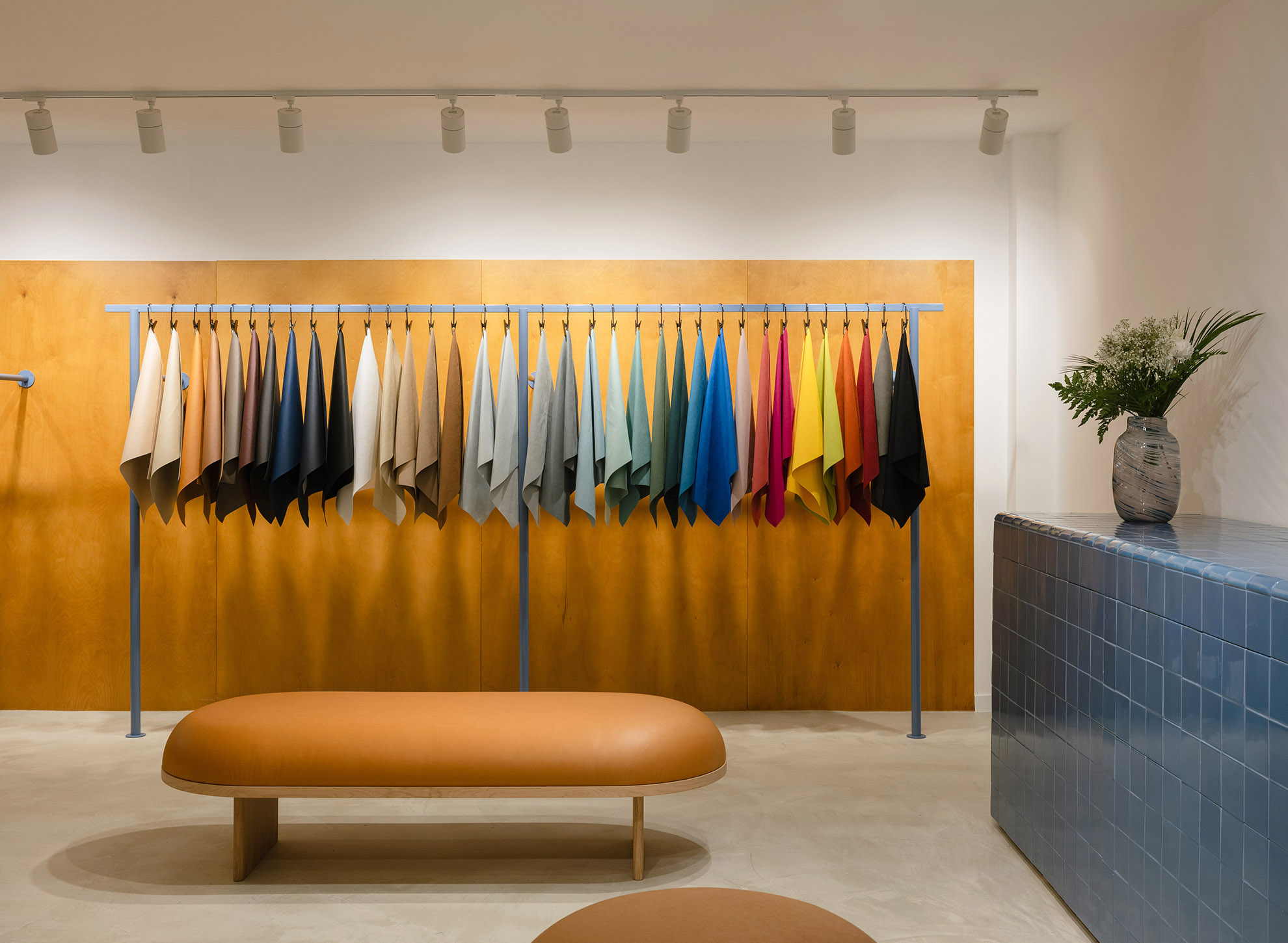
To introduce natural visual depth and increase spatial openness, the designers cut a large interior window into the warehouse wall, visually connecting the meeting area to Toray’s stockroom. This meeting zone includes a custom conference table and upholstered stools featuring various Ultrasuede colours and finishes.
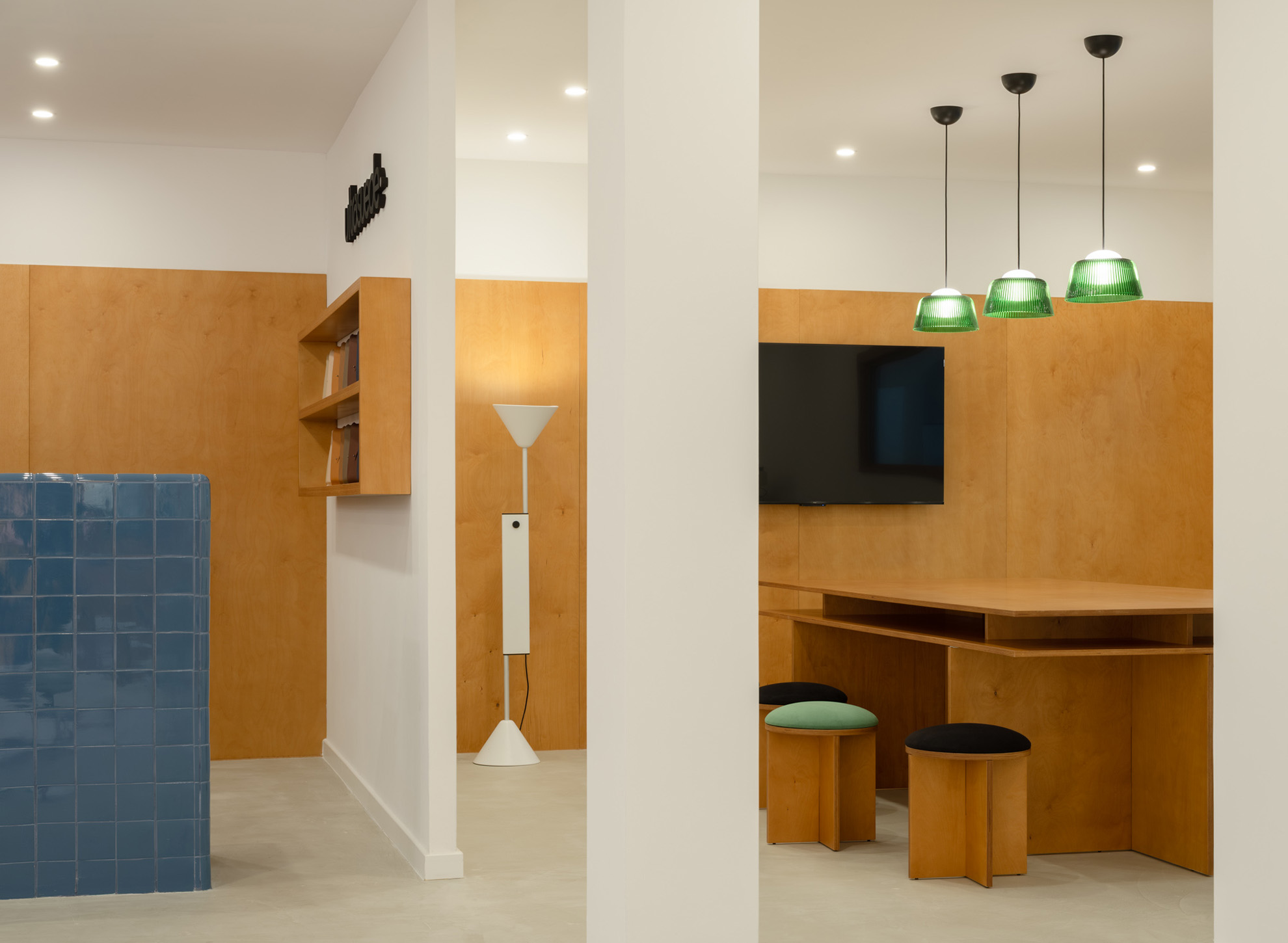
An industrial sewing machine was integrated into the showroom to facilitate rapid sampling, demonstrations, and on-site experimentation with the material.
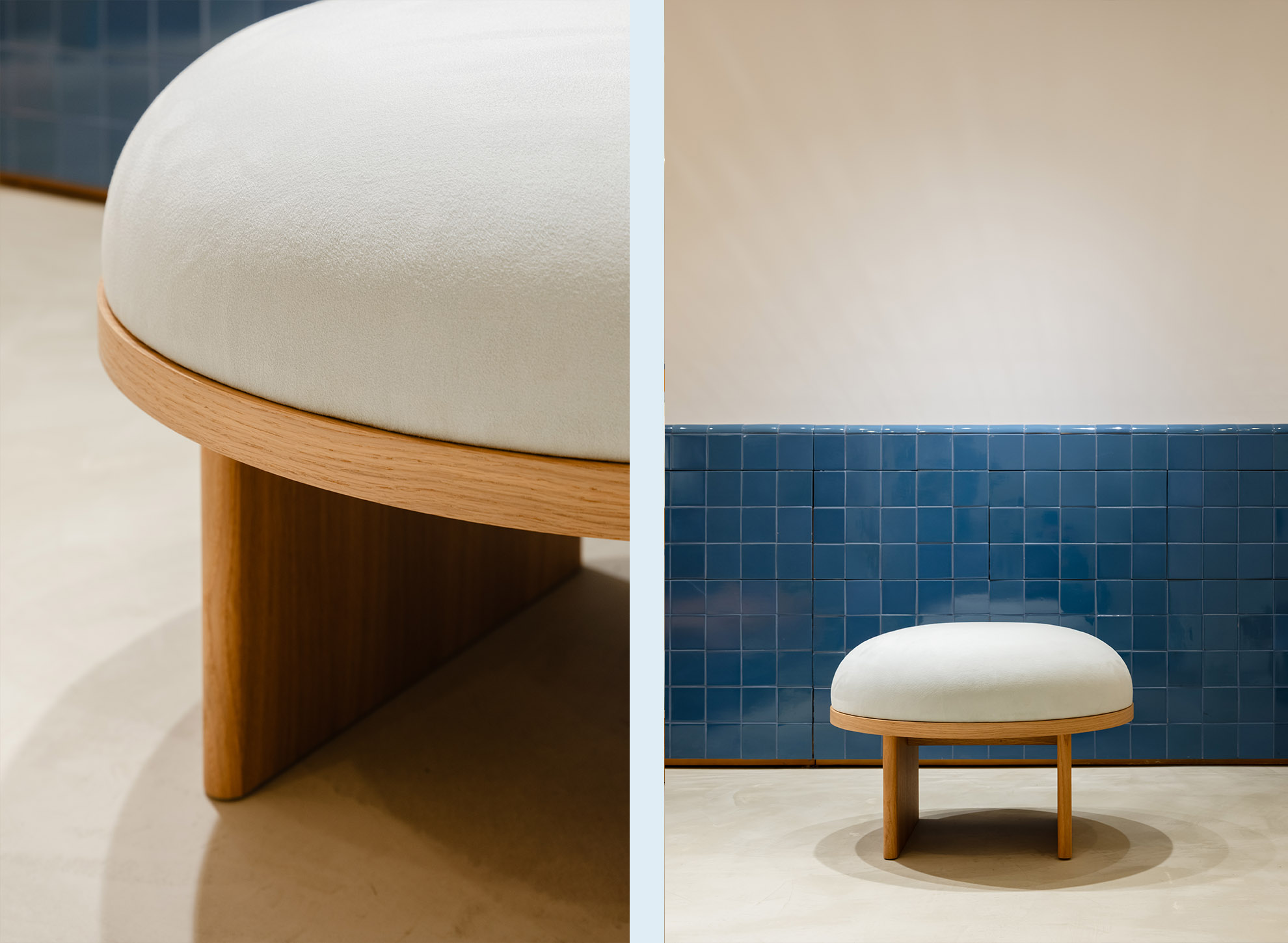
When the showroom doors are closed, the space becomes acoustically and visually insulated from the factory environment. It is transformed into a softly illuminated, warm interior atmosphere defined by birch wood surfaces, upholstered elements, and the tactile richness of the Ultrasuede collection—effectively concealing the industrial context outside and immersing visitors in the brand’s material universe.

2025 // Commission by Toray group.
Designer in collaboration with Ryosuke Fukusada.
Photos by Francisco Ascenção

TIN TIME WALL CLOCK
Tin Time is an exploration of the traditional Portuguese tin sheet craft known as Latoaria, which transforms flat sheet metal into three-dimensional products using simple techniques. For this project, I collaborated with a workshop near Lisbon, where I was first struck by the simplicity and ingenuity of chicken feeders featuring stamped holes to prevent the birds from harming their beaks.

I saw an opportunity to incorporate such holes into the clock design as a way to mark the passage of time. The process combined these existing tools with additional tin-rolling techniques.

While a precise 2D drawing was provided, many details were shaped by the craftsmans’ expertise with the material.

In contrast to the galvanized tin surface, the clock hands are enamelled for a subtle finish. A standard quartz mechanism powers the timepiece.

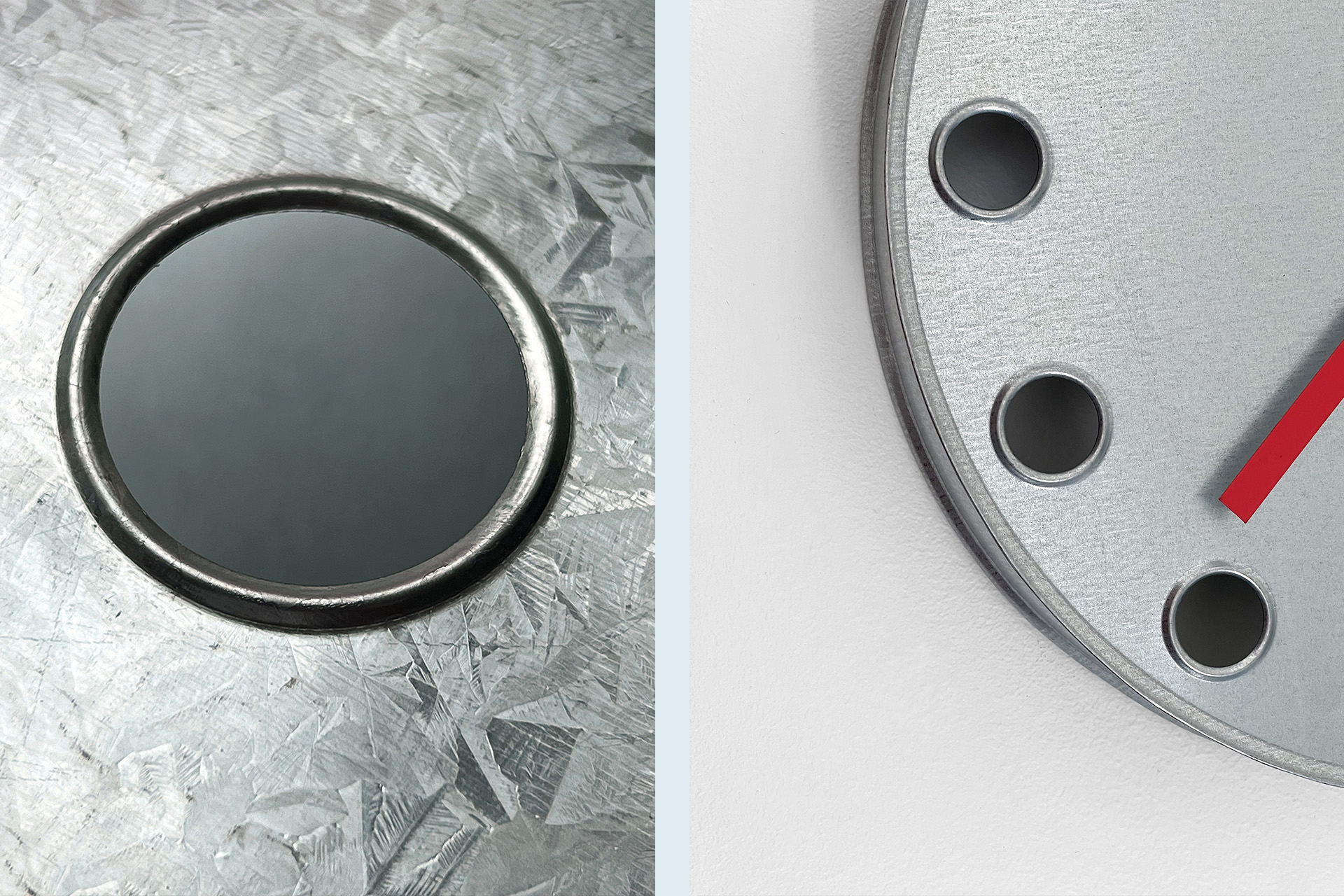
2025 // Commission for ‘24 Hours’ Exhibition
A project curated by Jamie Wolfond Studio. Creative and communication consulting by Simple Flair. Milan Design Week 2025
Photos by Pereira Office

BRIM GLASS PENDANT
Designed for HAY in collaboration with Ryosuke Fukusada, Brim draws inspiration from the classic glass pendants found in 'tascas,' 'trattorias,' and 'bodegas' worldwide. Our fascination with the precision and detailed definition offered by pressed glass led us to design a fluted pattern that enhances light diffusion, facilitating its even and soft spread.

For the light source, with the intention of eliminating any visible light bulbs, we developed an injection-molded plastic sphere. This sphere not only houses the two light bulbs (please consult development for the exact bulb type) but also features a perimeter brim used to support the lampshade—a detail that defines the product's name.

The light source not only provides the surface below with generous diffuse light but also emits a soft indirect light upwards, creating a calm and inviting environment. Utilizing pressed glass enables us to achieve a well-balanced shade with a distinctive silhouette at a competitive price, in line with the brand's democratic values.

This compact pendant lamp, designed to be used in clusters, also works exceptionally well in smaller spaces such as hallways, dining sets, over counters, or in a linear configuration. Inspired by apothecary containers, three glass colors were carefully chosen for the shade: clear, green, and grey—tones intended to complement various environments and moods.

This lamp updates a typology that is very know to us all with a new materiality and upwards ambient light, making it suitable for all kinds of environments.

It was designed for disassembly, allowing all components to be taken apart and recycled at the end of its life. The materials used were selected to ensure a long-lasting and durable product that can gracefully withstand the passage of time.

The purity of the light source, combined with the delicate fluted pattern featured in the glass shade, imparts the lamp with a recognisable yet neutral feel, hopefully turning it into a timeless piece.
2024 // In collaboration with Ryosuke Fukusada. Produced by HAY
Photos courtesy of HAY

CHIM CHIM COLOUR UPDATE
Two new colors and a surface finish have been introduced to update this range. OFF-WHITE and RED.
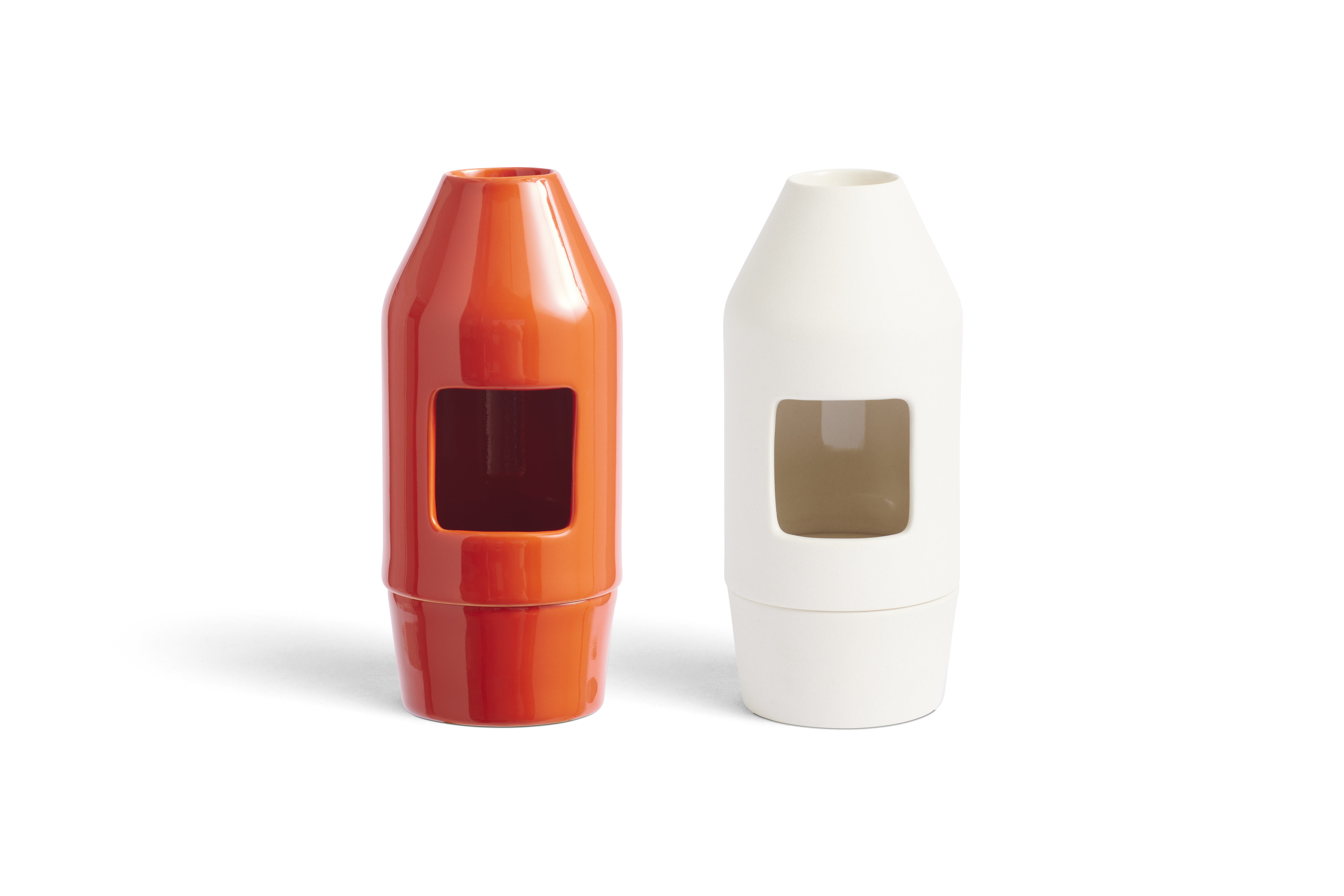
A lot of effort was placed to achieve the desired saturation on the RED color, offered now in a high gloss glaze and a terracotta color base.

The OFF-WHITE color aims to represent the purity of unglazed porcelane.
2023 // In collaboration with Ryosuke Fukusada. Produced by HAY
Photos courtesy of HAY

KAWARA OBJECTS
Originating from Kyoto, 'KYO-GAWARA' boasts a legacy spanning 1400 years. Dating back to the 6th to 7th century, the oldest roof tiles in Japan are believed to have originated from the founding of Asuka-dera Temple.
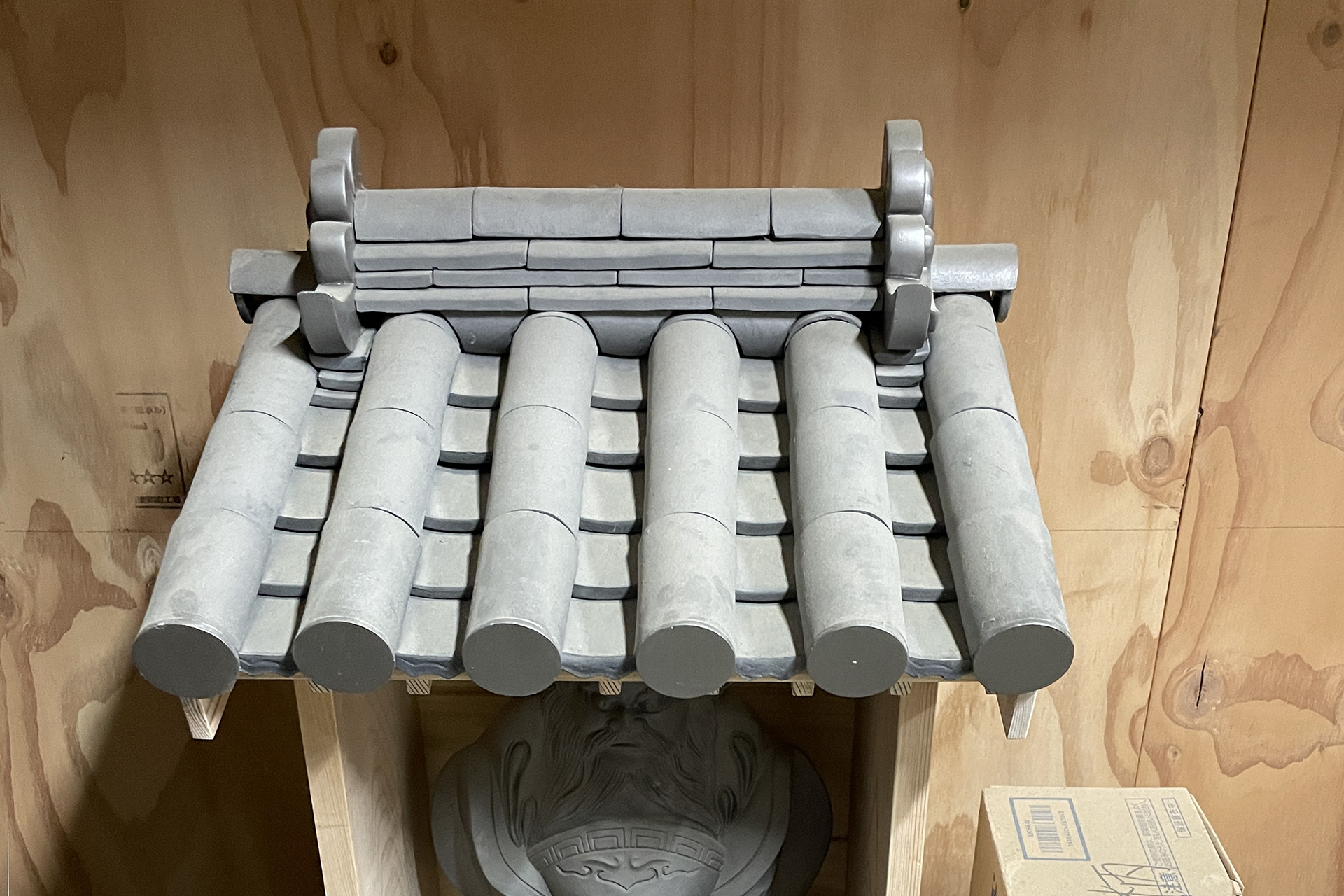
Kyoto tiles prominently feature in the scenic landscapes of Kyoto. Since the 16th century, accomplished tile artisans from across the nation have congregated in Higashiyama to build the Great Buddha Hall of Houkouji Temple. This tradition has endured to the present day. Kyoto-produced tiles undergo a meticulous process of polishing and smoking, resulting in a distinctive deep shine akin to metal, referred to as 'KYO-GAWARA'.

'KAWARA OBJECTS', meaning roof tiles in Japanese, encompass a variety of ceramic pieces developed at the historic workshop of KYOGAWARA Masahisa Asada, who is renowned for specializing in both tiles and traditional temple ornaments.

This project endeavors to translate centuries-old expertise into other interior applications and infuse this unique craftsmanship into modern products.
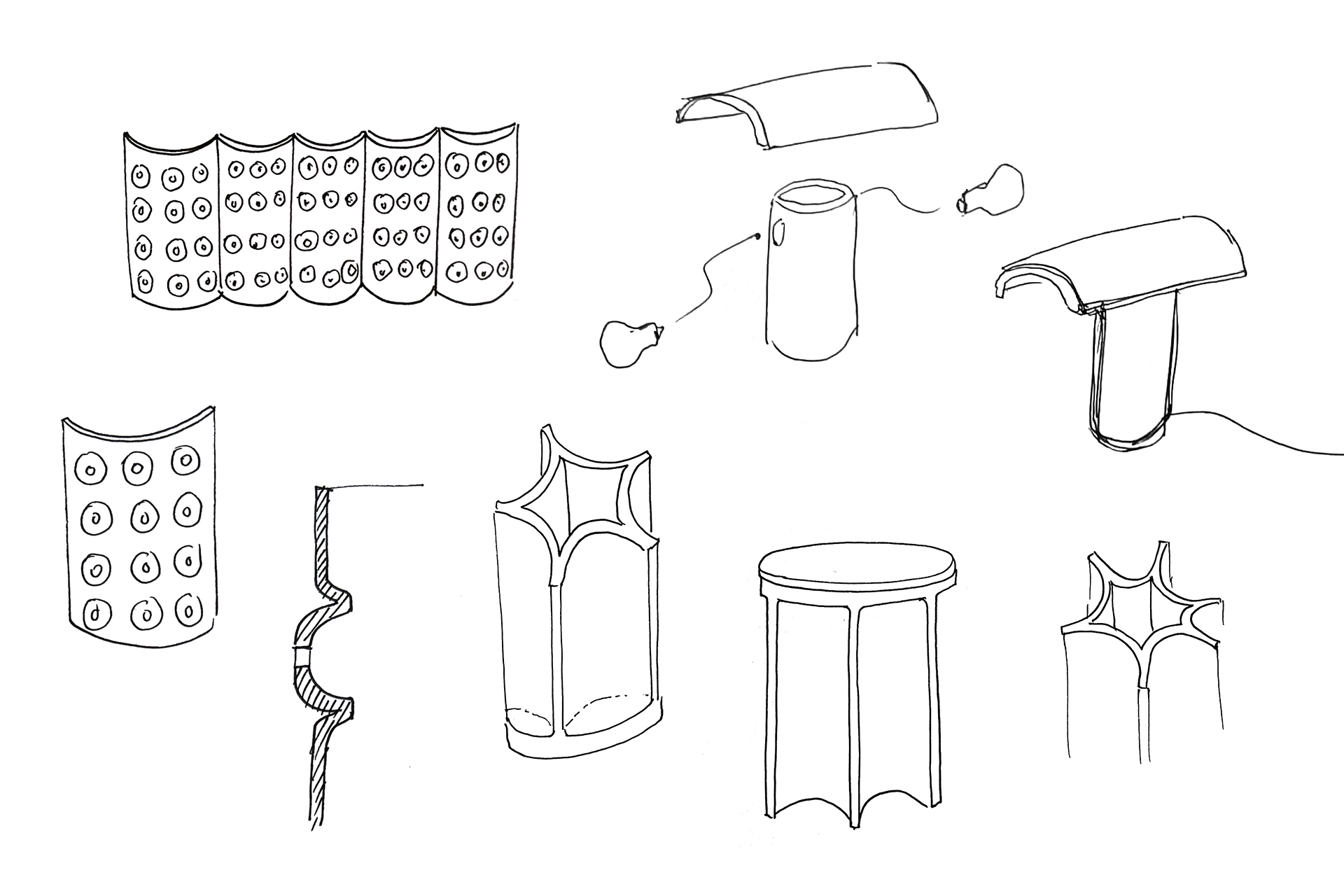
Collaborating with craftsmen, these three items were meticulously handcrafted using clay with various press molding and rolling techniques.

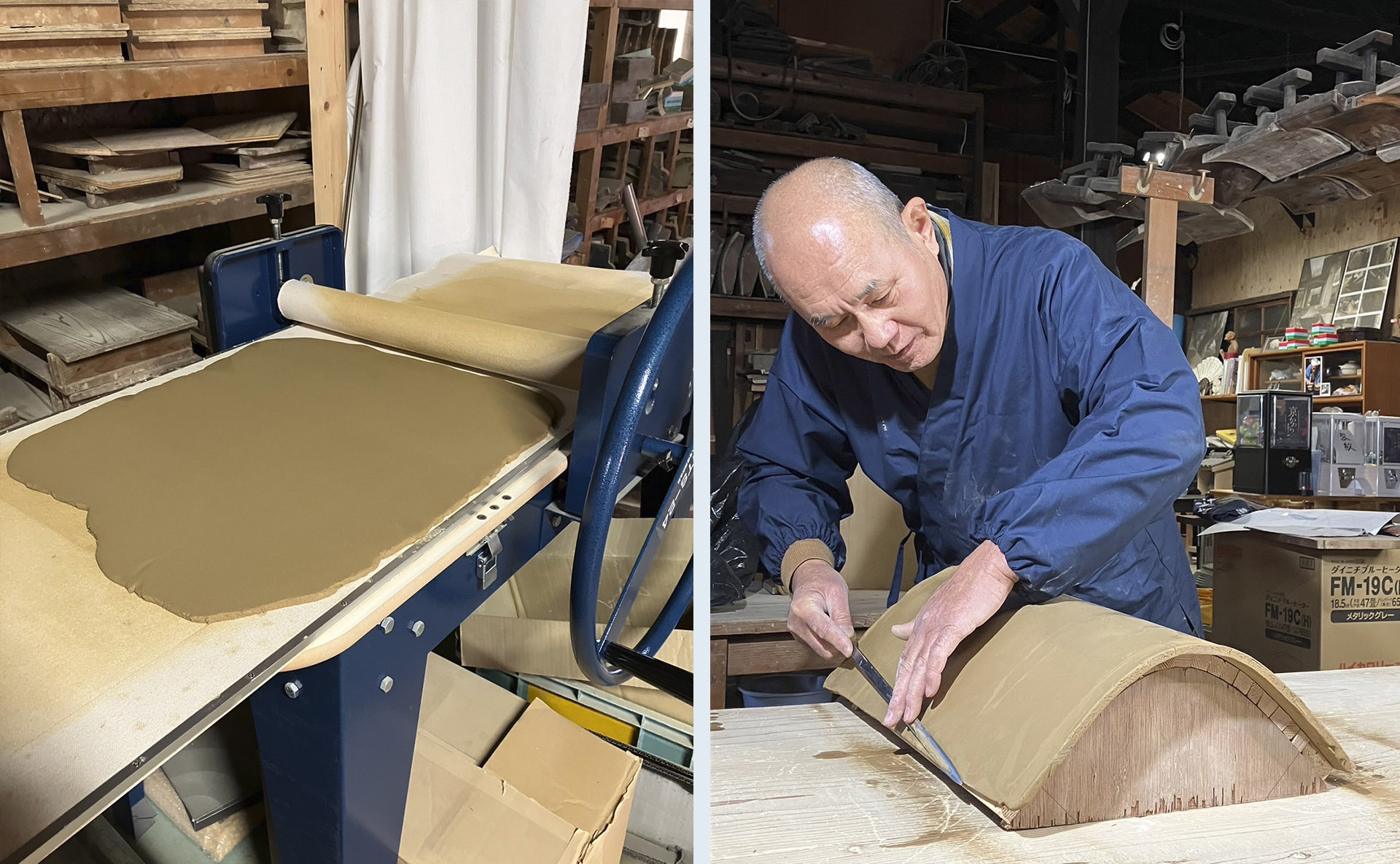
The table lamp features a hollow cylindrical base with two cutouts to house the light source, covered by a concave shade reminiscent of a roof tile.
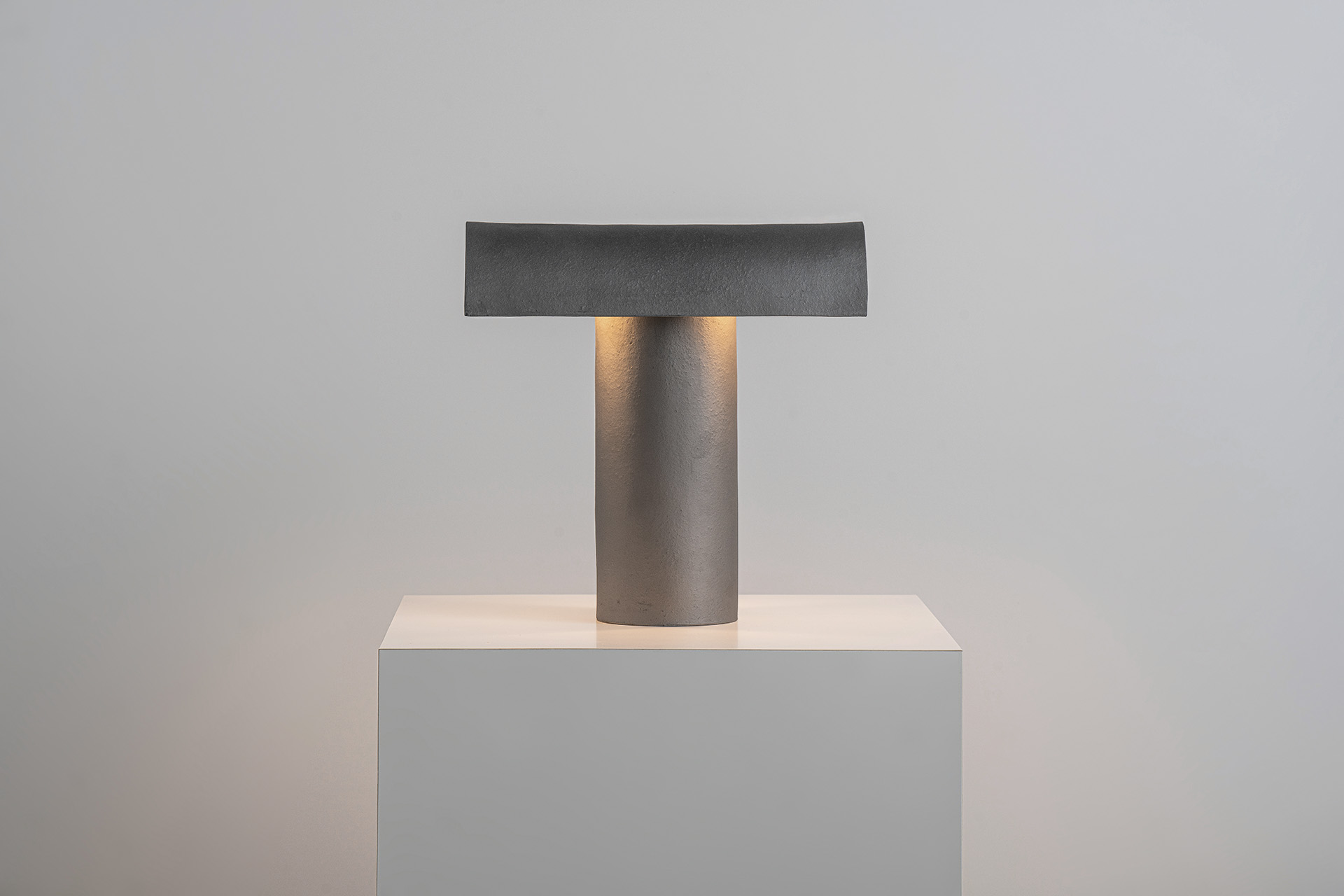
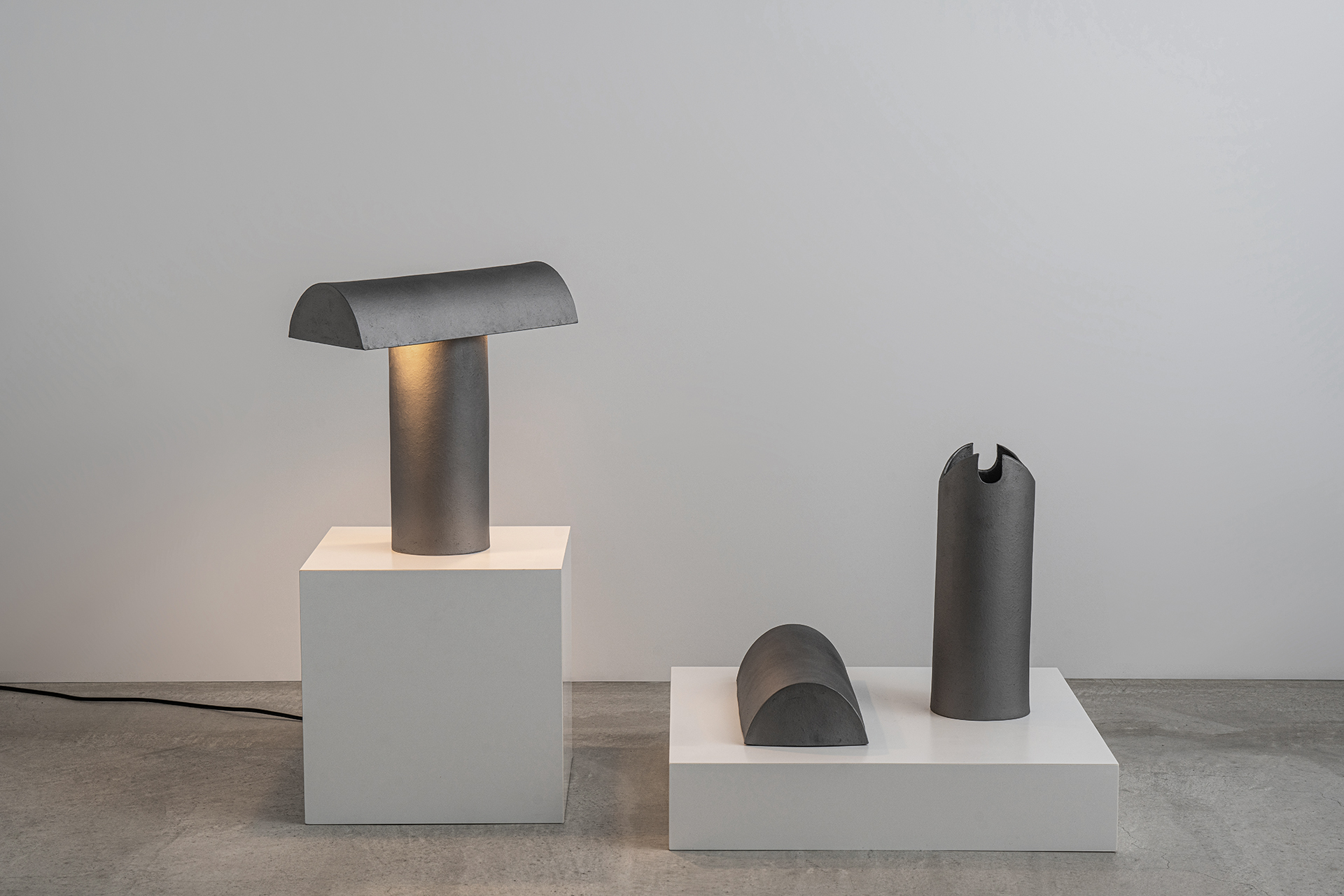
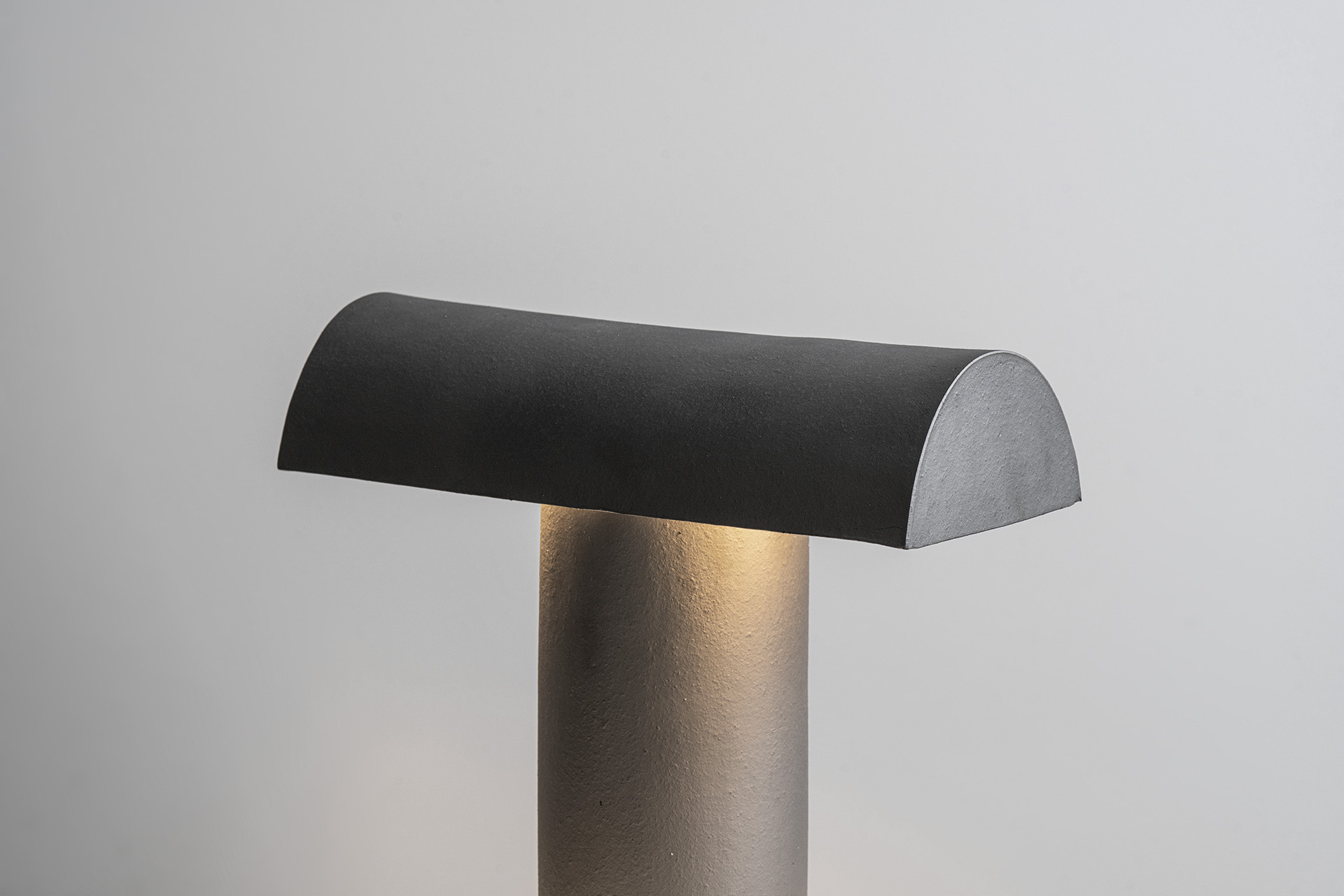
The wall sconces were inspired by the eye detail of a sculpture found at the workshop, multiplied on a concave sheet of ceramic. Due to the piece's complexity, a three-part plaster mold was developed to ensure its demolding, which the artisan carefully filled in piece by piece, adding two hooks for wall mounting.
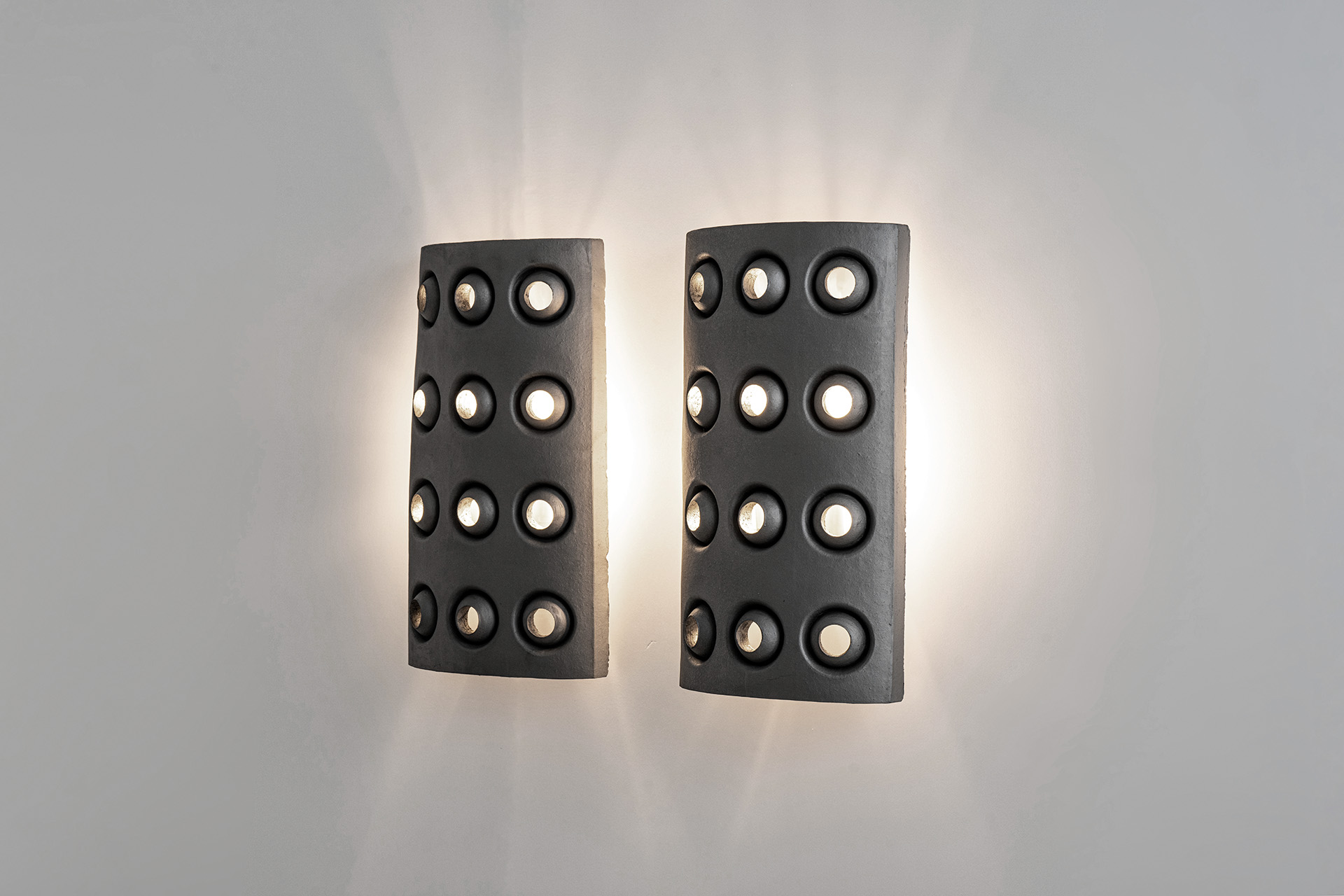
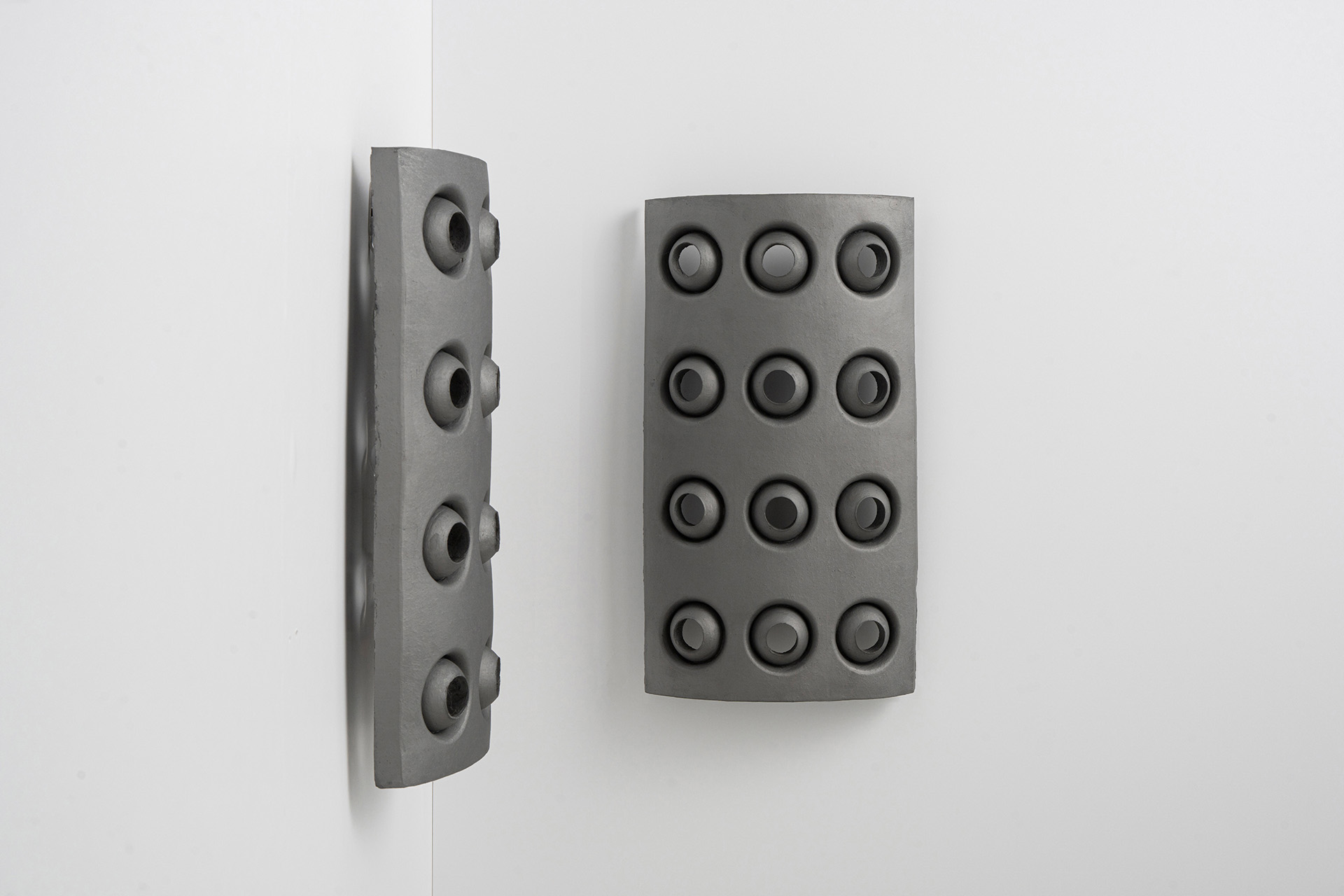
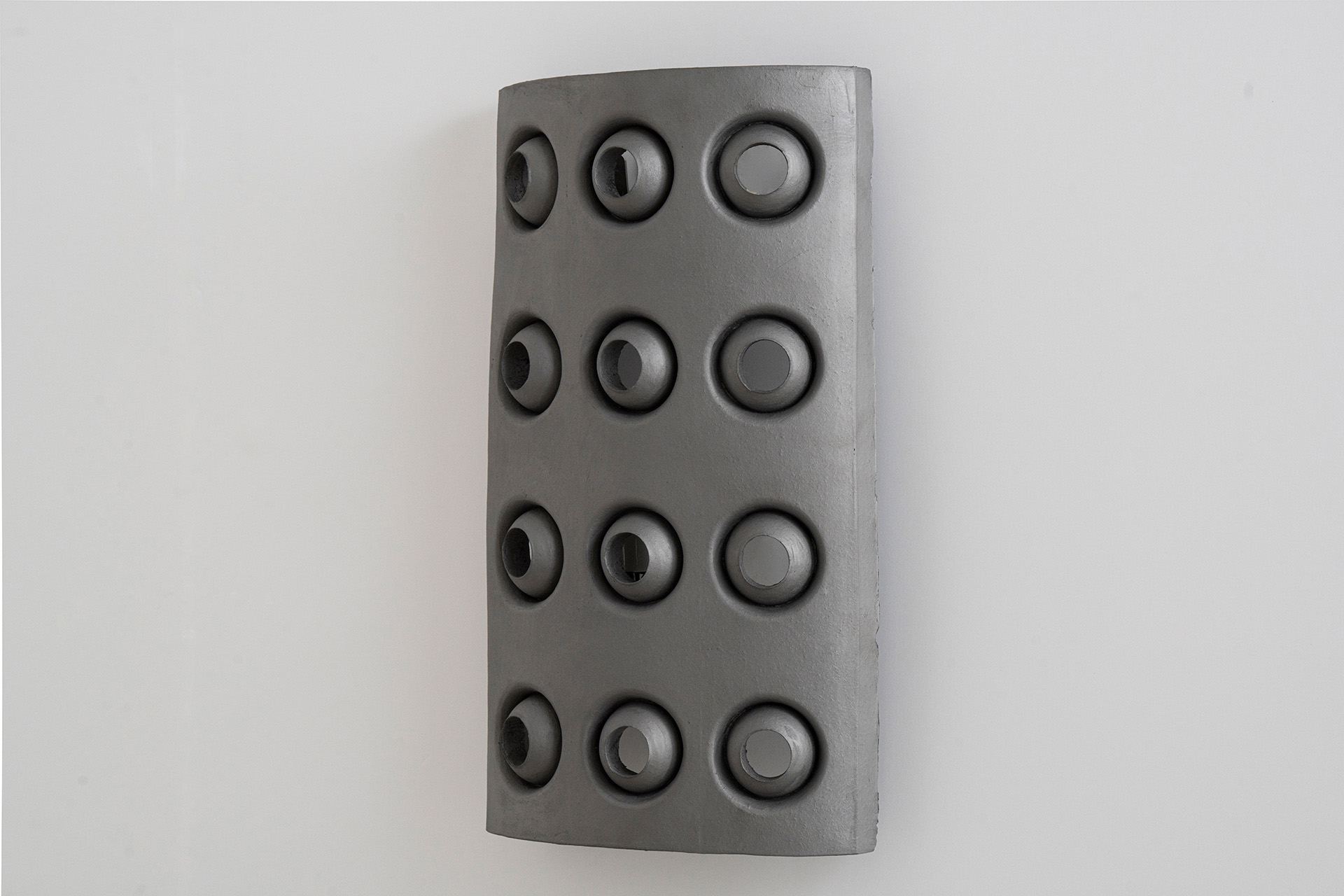
The final piece, a coffee table, comprises a base composed of four interconnected roof tiles and a flat ceramic disk.
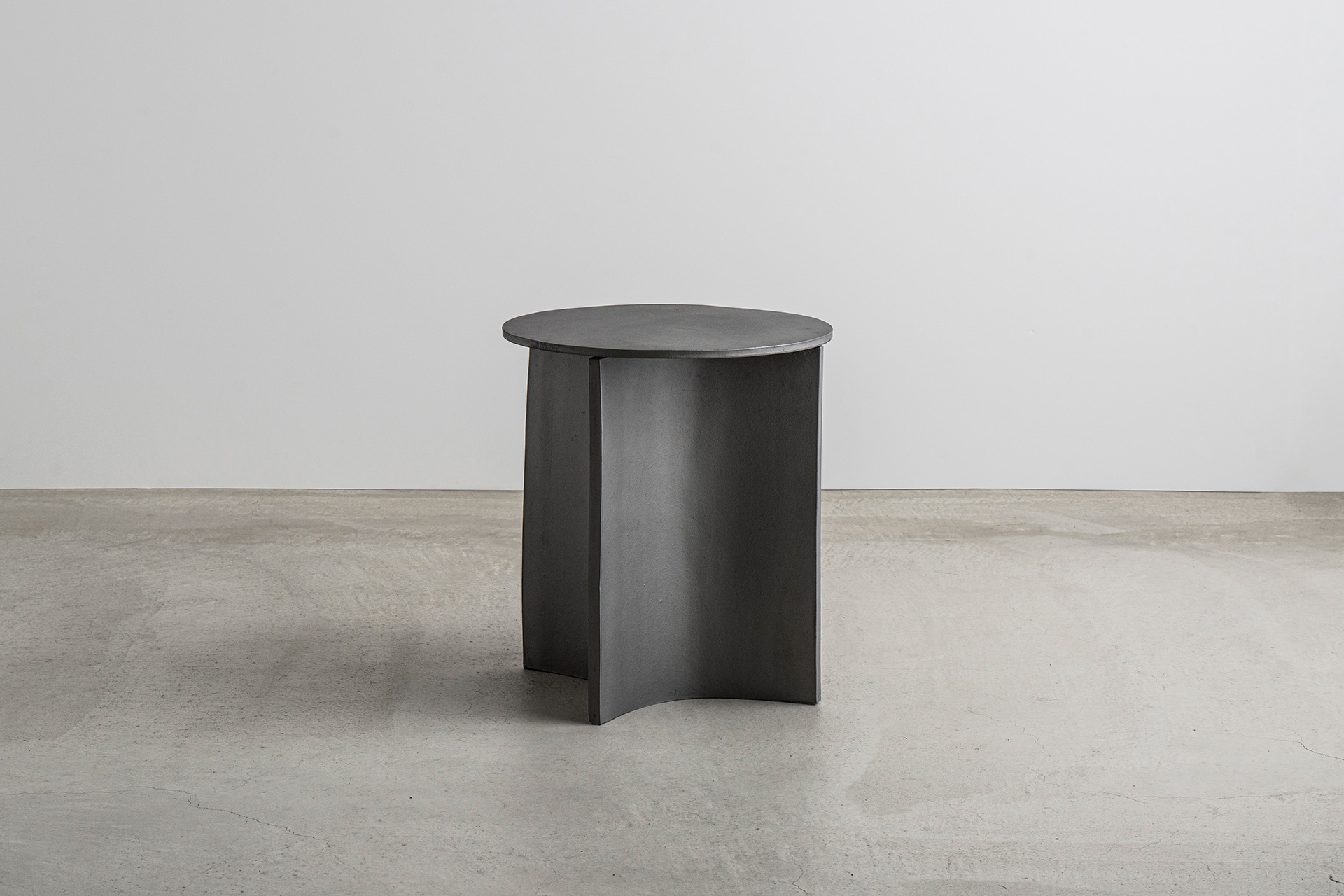
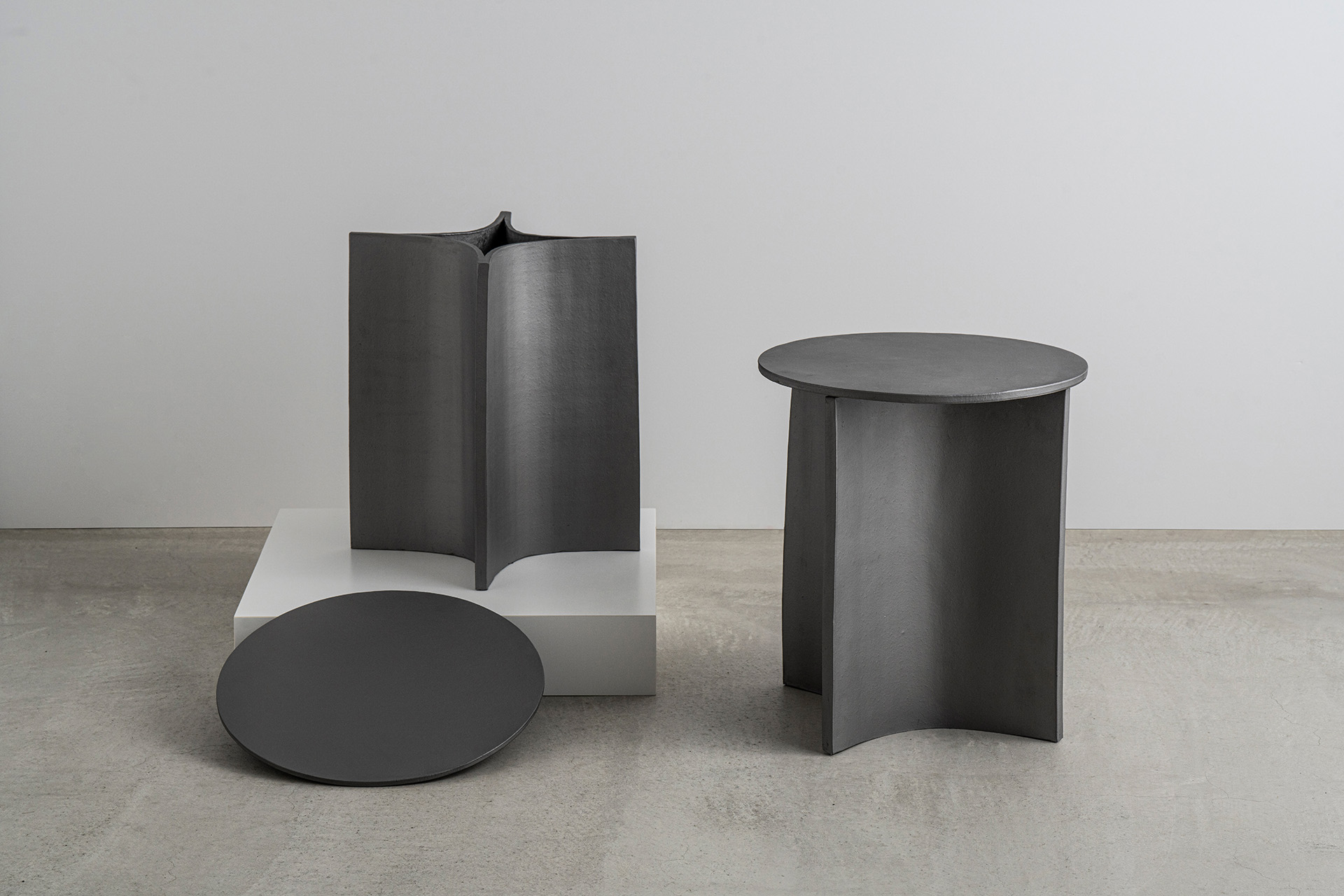
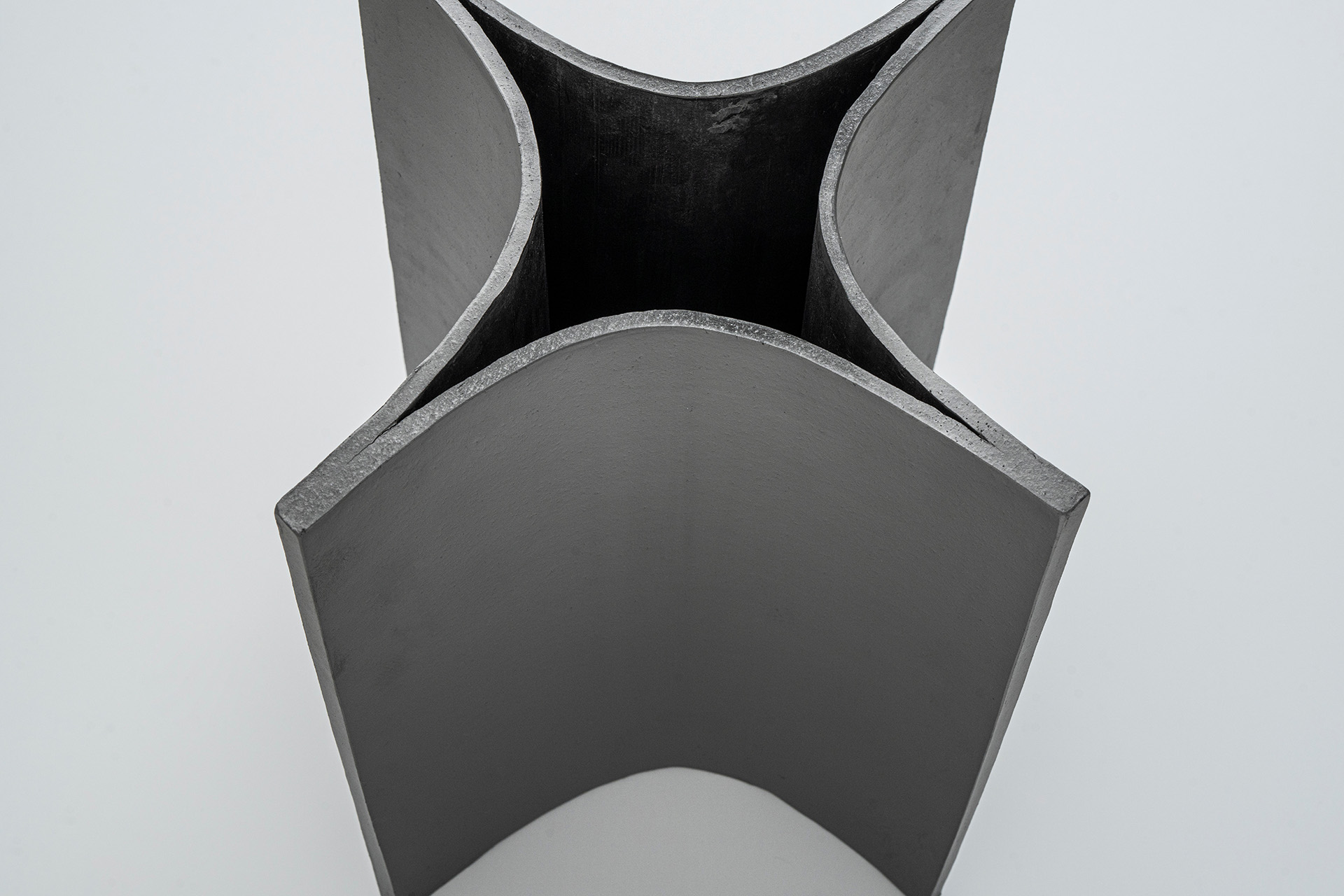
All surfaces are meticulously polished before being fired for 35 hours in a controlled butane gas kiln, reaching a maximum temperature of 1150 degrees. As the temperature begins to drop; the smoking process starts, giving the pieces their characteristic metallic finish.
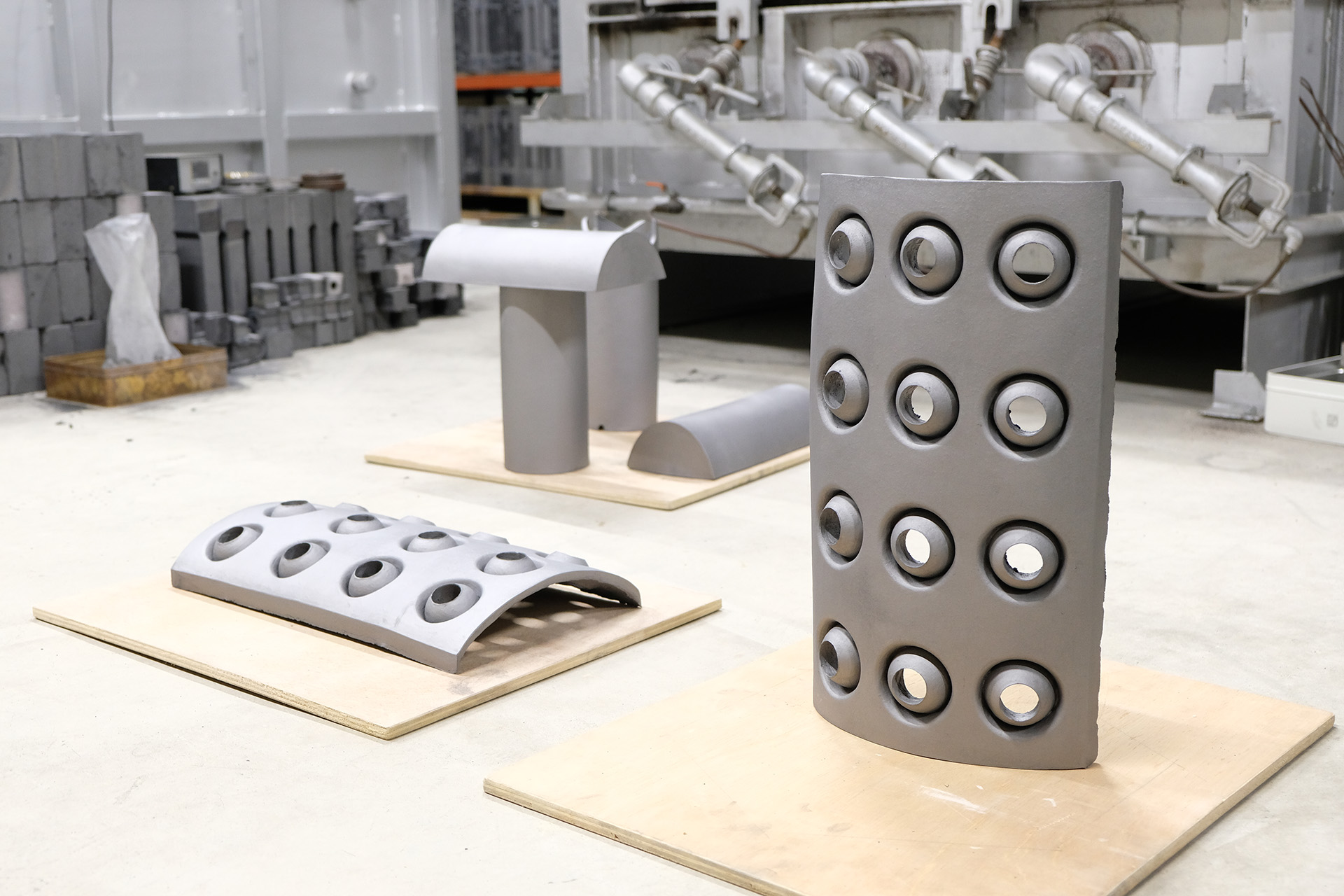
The chosen forms aim to accentuate the distinct materiality of ceramic and push the boundaries of the craftsmen's skill.
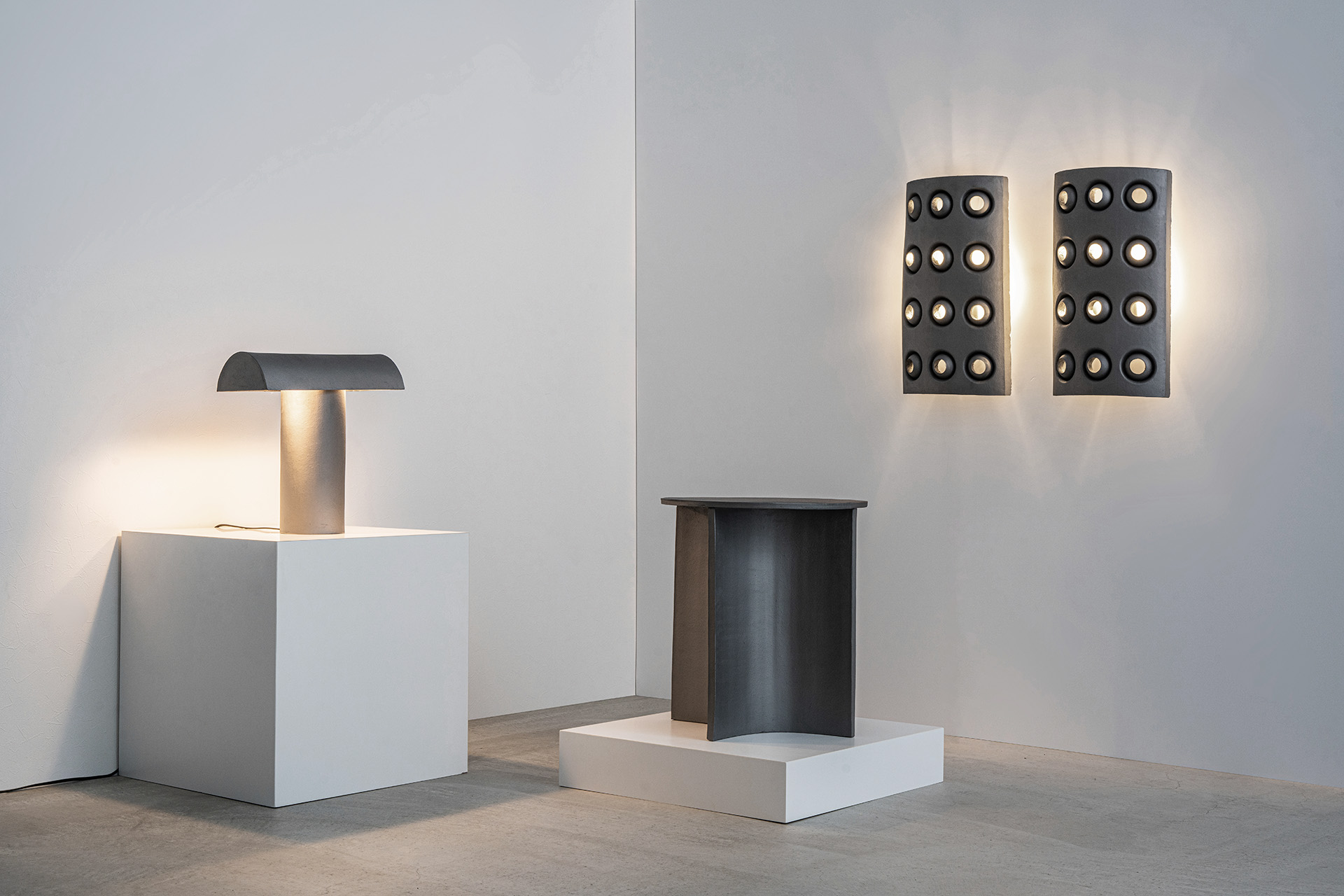
2024 // Available for edition.
This project was developed together with Ryosuke Fukusada in collaboration with KYOGAWARA Masahisa Asada.
Photos courtesy of Akihito Mori
